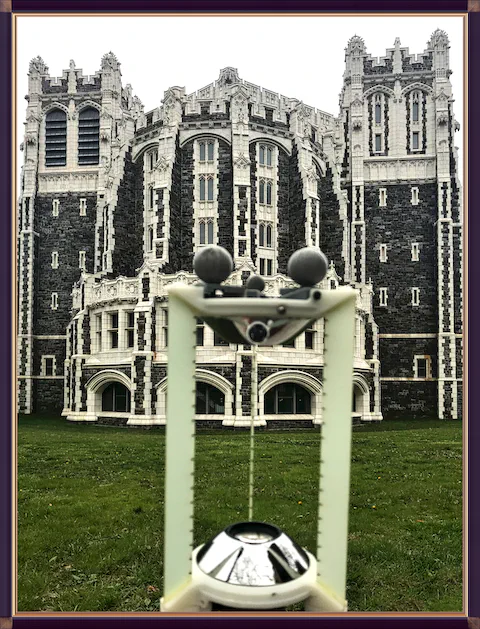Enhancing 3D Visual Odometry with Single-Camera Stereo Omnidirectional Systems
 Hyperbolic Single-Camera SOS in front of Shepard Hall, CCNY
Hyperbolic Single-Camera SOS in front of Shepard Hall, CCNY
Abstract
We explore low-cost solutions for efficiently improving the 3D pose estimation problem of a single camera moving in an unfamiliar environment. The visual odometry (VO) task - as it is called when using computer vision to estimate egomotion - is of particular interest to mobile robots as well as humans with visual impairments. The payload capacity of small robots like micro-aerial vehicles (drones) requires the use of portable perception equipment, which is constrained by size, weight, energy consumption, and processing power. Using a single camera as the passive sensor for the VO task satisfies these requirements, and it motivates the proposed solutions presented in this thesis. To deliver the portability goal with a single off-the-shelf camera, we have taken two approaches; The first one, and the most extensively studied here, revolves around an unorthodox camera-mirrors configuration (catadioptrics) achieving a stereo omnidirectional system (SOS). The second approach relies on expanding the visual features from the scene into higher dimensionalities to track the pose of a conventional camera in a photogrammetric fashion. The first goal has many interdependent challenges, which we address as part of this thesis; SOS design, projection model, adequate calibration procedure, and application to VO. We show several practical advantages for the single-camera SOS due to its complete 360-degree stereo views, that other conventional 3D sensors lack due to their limited field of view. Since our omnidirectional stereo (omnistereo) views are captured by a single camera, a truly instantaneous pair of panoramic images is possible for 3D perception tasks. Finally, we address the VO problem as a direct multichannel tracking approach, which increases the pose estimation accuracy of the baseline method (i,e., using only grayscale or color information) under the photometric error minimization as the heart of the ‘direct’ tracking algorithm. Currently, this solution has been tested on standard monocular cameras, but it could also be applied to an SOS. We believe the challenges that we attempted to solve have not been considered previously with the level of detail needed for successfully performing VO with a single camera as the ultimate goal in both real-life and simulated scenes.
Type
Publication
CUNY Academic Works